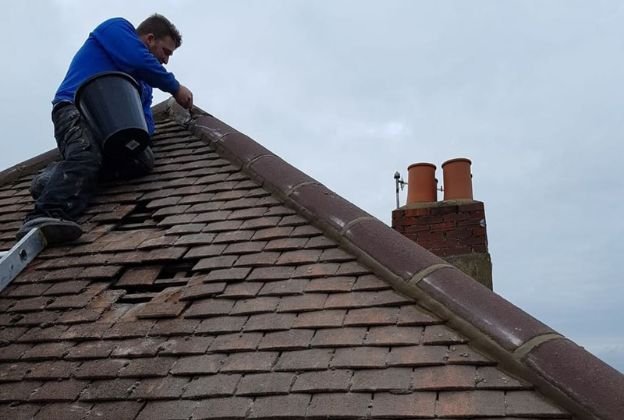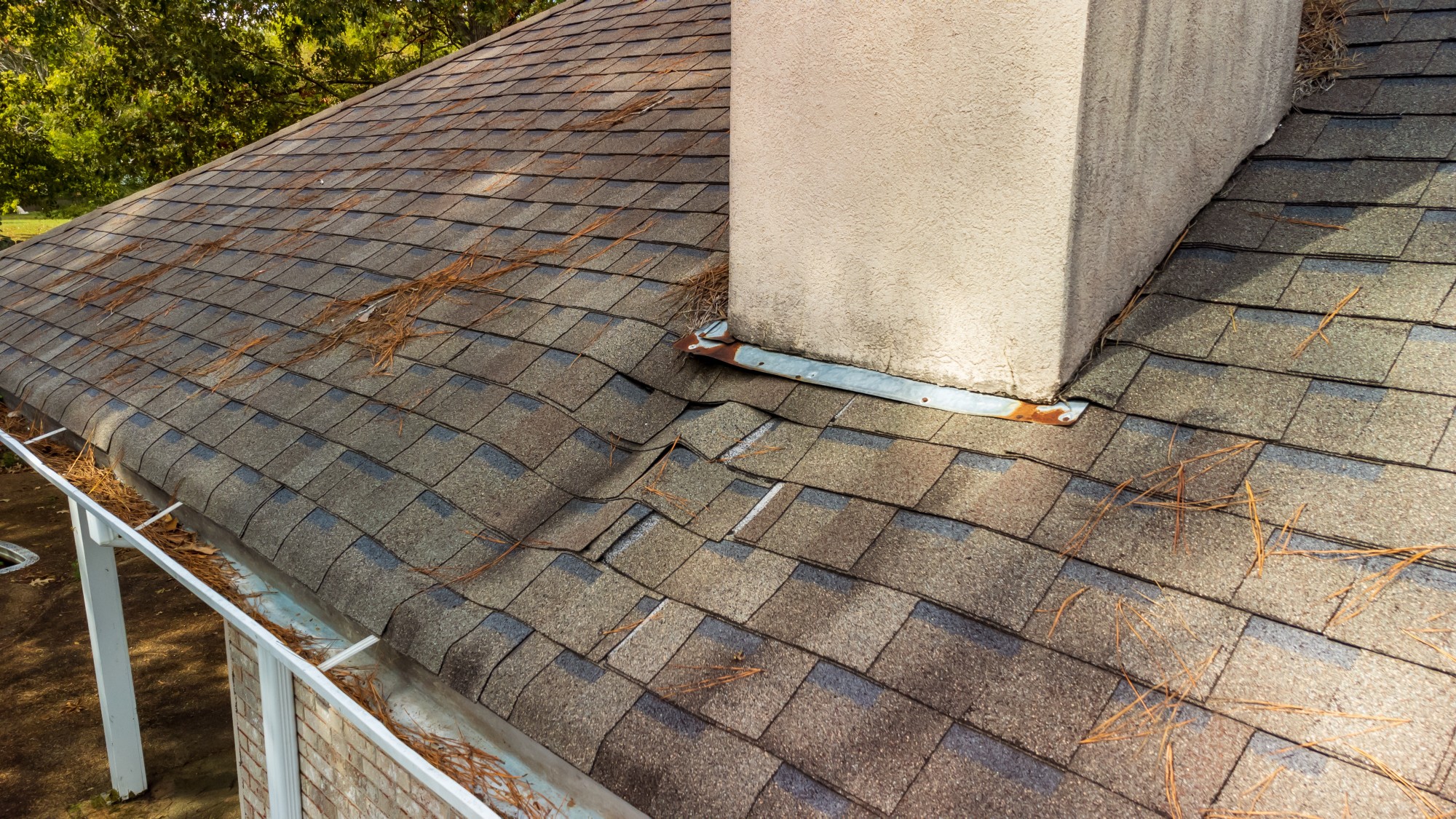Roofing Oahu: Top Quality Providers for Durable Roofs in Oahu
Roofing Oahu: Top Quality Providers for Durable Roofs in Oahu
Blog Article
Recognizing the Different Kinds of Roof Coverings: A Comprehensive Guide for Homeowners
In the world of homeownership, choosing the proper roof style is a decision that brings significant ramifications for both capability and visual allure. With a variety of options-- ranging from the typical gable to the contemporary level-- each type provides one-of-a-kind advantages and obstacles that should straighten with the homeowner's particular demands and ecological factors to consider. Comprehending these distinctions not only aids in making an enlightened selection yet additionally affects lasting maintenance and power efficiency. As we check out the complexities of various roofing system kinds, it comes to be noticeable that one size does not fit all; the best option may amaze you.
Gable Roofs
Saddleback roofs, characterized by their triangular form, are among the most preferred roofing styles as a result of their simplicity and effectiveness in dropping water and snow. This layout features 2 sloping sides that fulfill at a ridge, enabling for effective water drainage and reducing the threat of water buildup. The steep pitch generally related to saddleback roofs improves their ability to take care of heavy precipitation, making them appropriate for numerous climates.
In addition to their useful benefits, saddleback roofs supply visual versatility. They can be adapted to various building styles, from traditional to modern homes. The style can also suit additional functions such as dormer windows, which improve natural light and ventilation in the attic room area.
In addition, gable roofings offer enough space for insulation, adding to power effectiveness. Homeowners can select from a range of roof products, including asphalt shingles, steel, and ceramic tiles, even more boosting customization options.
Despite their advantages, saddleback roofs may require additional support in areas susceptible to high winds or heavy snowfall. Generally, the saddleback roof continues to be a favored selection due to its mix of capability, durability, and visual appeal.
Flat Roofs
Level roofs are commonly recognized for their minimal layout and sensible applications, particularly in industrial and industrial settings (oahu roofing). These roofings include a almost straight or horizontal surface, which allows for simple building and flexible space application. While they might do not have the visual charm of pitched roofs, level roofs provide numerous advantages, especially in city environments where taking full advantage of room is vital
Among the primary benefits of level roof coverings is their access. Property owners can make use of the roofing space for different purposes, such as roof gardens, terraces, or solar panel setups. Additionally, flat roofs are commonly more affordable to install and preserve contrasted to their sloped counterparts, as they need less products and labor.
However, flat roofs do present certain challenges. Correct water drainage is vital to stop water merging, which can lead to leaks and structural damage. Therefore, choosing high-grade waterproofing materials and regular examinations are essential for guaranteeing long life. Common materials used for flat roofing systems consist of built-up roofing (BUR), changed bitumen, and single-ply membrane layers, each offering distinctive advantages. In general, flat roofing systems function as a practical and adaptable selection for many house owners and organizations alike.
Hip Roofing Systems
Hip roofing systems are characterized by their sloped sides that merge on top, developing a ridge. This design is distinctive from saddleback roofs, as all four sides of a hip roof covering incline downwards towards the wall surfaces, giving an extra steady structure. The angle of the inclines can differ, permitting adaptability in architectural aesthetic appeals and performance.
Among the primary benefits of hip roofs is their ability to withstand hefty winds and negative climate condition. The sloped surfaces enable much better water drainage, reducing the risk of leakages and water damage. Furthermore, hip roofs provide enhanced attic area, which can be utilized for storage and even converted right into comfortable locations.
However, building a hip roof can be extra complex and pricey than easier roof kinds, such as saddleback roofs. The extra material and labor included in creating the slopes and ensuring appropriate structural stability can lead to greater expenses. In spite of these disadvantages, numerous property owners favor hip roofs for their longevity, aesthetic appeal, and possibility for energy efficiency.
Mansard Roofings
Mansard roof coverings, frequently acknowledged by their distinct four-sided style, attribute two slopes on each side, with the lower slope being steeper than the top. This architectural design, stemming from France in the 17th century, is not just cosmetically enticing but useful, as it optimizes the functional space in the upper floorings of a building. The steep reduced incline enables for even more headroom, making it an optimal selection for loft spaces or attics, which can be converted into living spaces.
Mansard roofing systems are identified by their convenience, accommodating different building styles, from traditional to contemporary. They can be built with various materials, consisting of asphalt tiles, slate, or steel, offering property owners with a series of choices to match their preferences and budget plans. In addition, the design enables the assimilation of dormer windows, improving all-natural light and air flow in the top levels.
Nonetheless, it is vital to consider the possible downsides. Mansard roofing systems might need more maintenance because of the complexity of their design, and their high inclines can be challenging for snow and rain drainage. Generally, mansard roofs combine sophistication with practicality, making them a prominent choice amongst house owners looking for distinct building features.
Lost Roofings
As home owners increasingly seek site here simplicity and functionality in their architectural styles, shed roofs have emerged as a prominent selection. Defined by a single sloping plane, a shed roof covering provides a minimal aesthetic that enhances various home designs, from contemporary to rustic.
Among the primary advantages of a shed roof covering is its simple building and construction, which commonly equates to decrease labor and material prices. This layout allows for effective water drainage, minimizing the danger of leaks and water damages. Additionally, the upright incline provides ample area for skylights, enhancing natural light within the interior.
Lost roof coverings also supply convenience in terms of use. They can be properly integrated right into additions, garages, or outside structures these details like sheds and pavilions. Additionally, this roofing system style can suit various roof materials, including metal, asphalt tiles, and even environment-friendly roofs, aligning with environment-friendly initiatives.
However, it is important to consider local climate conditions, as heavy snow loads may necessitate modifications to the roofing system's angle or framework. On the whole, lost roofings present a practical and cosmetically pleasing choice for house owners aiming to make best use of performance without endangering design.
Verdict


Gable roofings, characterized by their triangular shape, are among the most prominent roof covering designs due to their simpleness and performance in shedding water and snow. oahu roofing. The steep pitch typically connected with gable roofing systems enhances their capacity to take care of heavy rainfall, making them appropriate for different climates
While they may lack the aesthetic appeal of pitched roofing systems, flat roofings provide numerous advantages, specifically in urban settings where maximizing space is essential.

Report this page